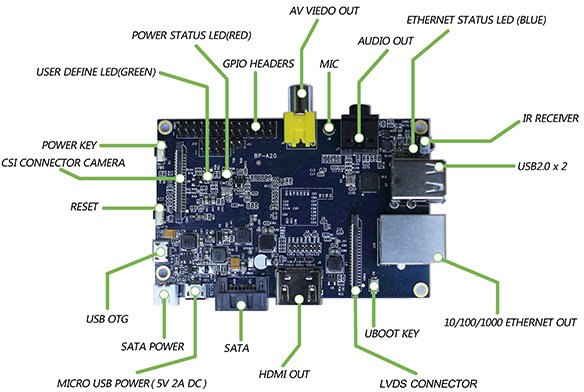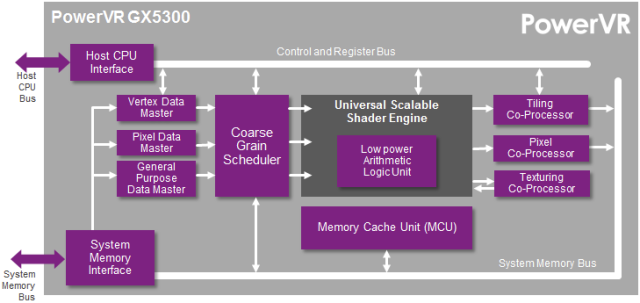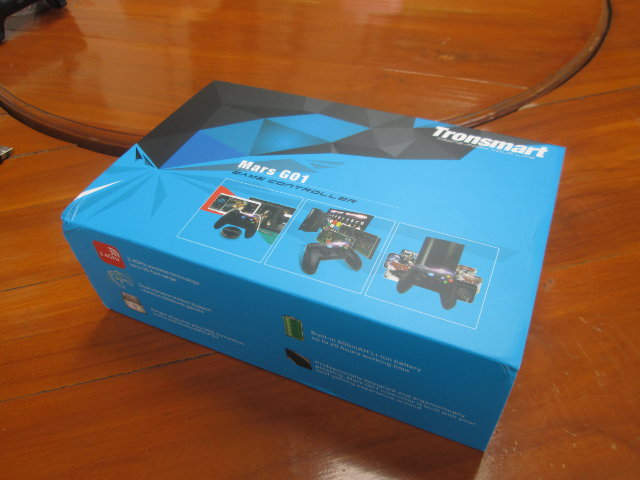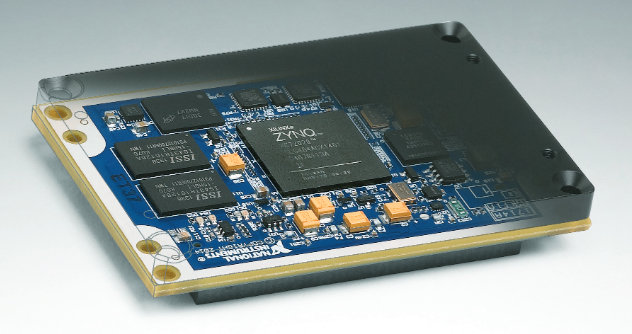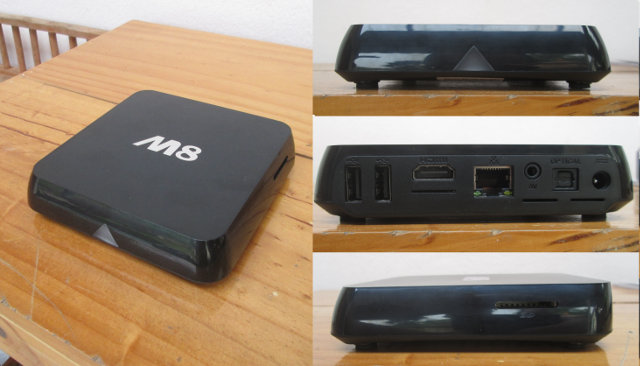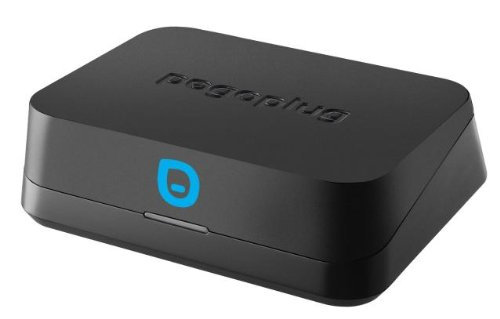Banana Pi is a development board powered by AllWinner A20 dual core SoC with 1GB RAM, and with expansion headers and a form factor very similar to the Raspberry Pi. It can run Debian, Lubuntu, Android 4.2, Arch Linux ARM, Scratch OS, and OpenSuse, but Lemarker.org community would like more educational materials such as open source software or hardware projects, tutorials, etc.., so they’ve launched a program to give away boards to developers and people who can help writing and maintaining documentation. There are three categories of projects: STEAM – “Science, Technology, Engineering, Art & Mathematics” educational, open source projects running on the the Banana Pi Hardware or Software Project – Open source projects based on Banana Pi which could be helpful to the community, including open source hardware peripherals projects; Banana Pi Fans – You don’t need to be as technical as for the two others categories, but you […]
Firefly-RK3288 Development Board To Support Android and Lubuntu
We’ve already got a long list of upcoming Rockchip RK3288 based Android media players, but no low cost development boards have been announced to date. We can certainly expect a Radxa Rock 2 board with the Cortex A17 processor, but it might not be the only one, as Firefly-RK3288 development board powered by Rockchip RK3288 is currently being developed by another Chinese team. Current specifications for Firefly-RK3288 board: SoC – Rockchip 3288 quad core ARM Cortex A17 up to 1.8 GHz with Mali-T764 GPU supporting OpenGL ES 1.1/2.0 /3.0, and OpenCL 1.1 System Memory – 2G DDR3 Storage – 8GB eMMC flash + micro SD slot Video I/O HDMI 2.0 up to 3840×2160@60p VGA out (D-SUB connector) VGA in is available via the expansion headers. LCD, MIPI and LVDS Audio Output / Input – HDMI, optical S/PDIF, microphone header, and built-in MIC Connectivity – Gigabit Ethernet, dual band 802.11 b/g/n Wi-Fi with external antenna, and Bluetooth […]
Imagination Technologies Unveils Low Power Low Footprint PowerVR GX5300 GPU for Wearables
Up to now most wearables are based on MCU solutions or derived from mobile platforms, which may either not provide the advanced features required by users, or consume too much power and take more space than needed. With Ineda Dhanush and Mediatek Aster, we’ve already seen silicon vendors design wearables SoCs, and now Imagination Technologies has just announced PowerVR GX5300 GPU targeting wearables with support for OpenGL ES 2.0, 480p to 720p resolution, and using 0.55mm2 silicon area based on 28nm process. PowerVR GX5300 GPU will be support Android, Android Wear, and Linux based operation systems, and according to the company has the following key features: Unified shaders – The TBDR graphics architecture offers unified shaders where vertex, pixel and GPU compute resources are scaled simultaneously. Low power and high precision graphics – All PowerVR GPUs offer a mix of low (FP16) and high precision (FP32) rendering and implement the […]
Tronsmart Mars G01 Wireless Gamepad Review on Android
One way to play games in Android TV Box with a gamepad is to use a Sony Playstation 3 Controller with Sixaxis Controller app. It can work, but you need a device that supports Bluetooth, with the right drivers, and most games require you to do the mapping manually which is not that user-friendly. Now, they make Android compatible Bluetooth Gamepad such as G910 which seems really nice, but I’ve been told it’s rather hit or miss, and some people have problem with the Bluetooth connection. GeekBuying instead recommends Tronsmart Mars G01, based on 2.4 GHz technology, that requires an external USB RF dongle, but which alledgly does not have connection problems. It works with Android, Windows, and Playstation 3. The company sent me a sample, so I’ve taken some pictures and tried a few games with Tronsmart Vega S89 Elite TV box. Tronsmart Mars G01 Unboxing I’ve received the […]
National Instruments Introduces NI sbRIO-9651 SoM Based on Xilinx Zynq SoC Running Linux Real-time OS
National Instruments has recently announced NI sbRIO-9651 System on Module (SoM) powered by Xilinx Zynq-7020 dual core Cortex A9 + FPGA SoC, based on LabVIEW RIO architecture used in products such as myRIO, and coming with a complete middleware solution as well as NI Linux Real-Time OS. NI sbRIO-9651 hardware specifications: SoC – Xilinx Zynq-7020 with two ARM Cortex-A9 cores @ 667MHz and Artix-7 FPGA with 85K Logic Cells System Memory – 512MB DRAM Storage – 512MB flash Dedicated processor I/O: Gigabit Ethernet USB 2.0 Host, USB 2.0 Host/Device RS232 (TX/RX) SHDC FPGA I/O: 160 single-ended FPGA I/O Configurable peripherals: Gigabit Ethernet, 3x RS232, 2x RS485, 2x CAN Power Consumption – 3 to 5 Watts (typical) Dimensions – 50.8 x 78.2 mm Temperature range – -40 to 85 °C NI SoM is said to integrate a validated board support package (BSP) and device drivers with the MI Linux Real-time OS. […]
XBMC Linux (Beta) for SZ Tomato / Eny M8 Available for Download
SZ Tomato / Eny (E)M8 is an Android TV box powered by Amlogic S802 quad core processor, with 2GB RAM and 16 GB flash, but Stane1983 has been working on an XBMC Linux port for the device, and has released a beta version on Freaktab a few days ago. The firmware file (MX_LINUX-K200-update.zip) is available, and just need to be copied to an SD card to perform the update. The version is Gotham 13.1. This will completely replace you Android installation, and only works on M8 TV box, as the bootloader is not compatible with other S802 hardware, and the firmware only support AP6330 Wi-Fi module. If you decide not to keep using XBMC Linux, you can revert to Android, but reflashing the firmware via the SD card. This is a beta version, so expects some bugs. The list of known bugs is as follows: Bootlogo and splashscreens (booting up/shutting […]
The World’s Cheapest Linux Computer? Pogoplug Mobile Now Sells for $7
Somebody asked “Anyone knows a computer cheaper than a Raspberry Pi with a network interface?” on Google+ mini PCs community. Some OpenWRT routers such as TPLink WR703N selling for about $20, or the VoCore Wi-Fi module selling for about the same price (Wi-Fi only) were parts of the answers, and I also mentioned some HDMI TV dongles that now sell for around $35, which is still a little cheaper than the Raspberry Pi model B when one considers shipping. But I found the answer by dhead666 particularly interesting: Pogoplug Mobile goes for 7$ on Amazon and that includes psu and network cable. It run Linux great (I’m using Arch) but you will want to have a ttl-usb cable and soldering iron available in case you manage to mess u-boot (go to the doozan’s forums for more info about the u-boot). Let’s have a look. Pogoplug Mobile is not a new […]
Intel Announces Galileo Gen 2 Development Board Based on Quark SoC
As many of us are waiting for our Intel Galileo board promised by Microsoft, and right after the Raspberry Pi foundation announced the Raspberry Pi Model B+, Intel has introduced a new version of the Galileo board which they simply call Galileo Gen 2. The development board is still powered by Intel Quark single core SoC (Pentium class) and with the same key features as the original Galileo Board, but with some tweaks based on the feedback from the community. Intel Galileo Gen 2 specifications (Changes in Bold): SoC- Intel Quark SoC X1000 single core, single-thread application processor @ 400 MHz, with 12KB embedded SRAM System Memory – 256MB DDR3, 5 Storage – 8MB NOR fklash, 8KB EEPROM, and micro SD card slot (up to 32GB) Connectivity – 10/100M Ethernet USB – 1x USB 2.0 host port, 1x micro USB 2.0 device port used for programming Debugging / Programming 10-pin […]


